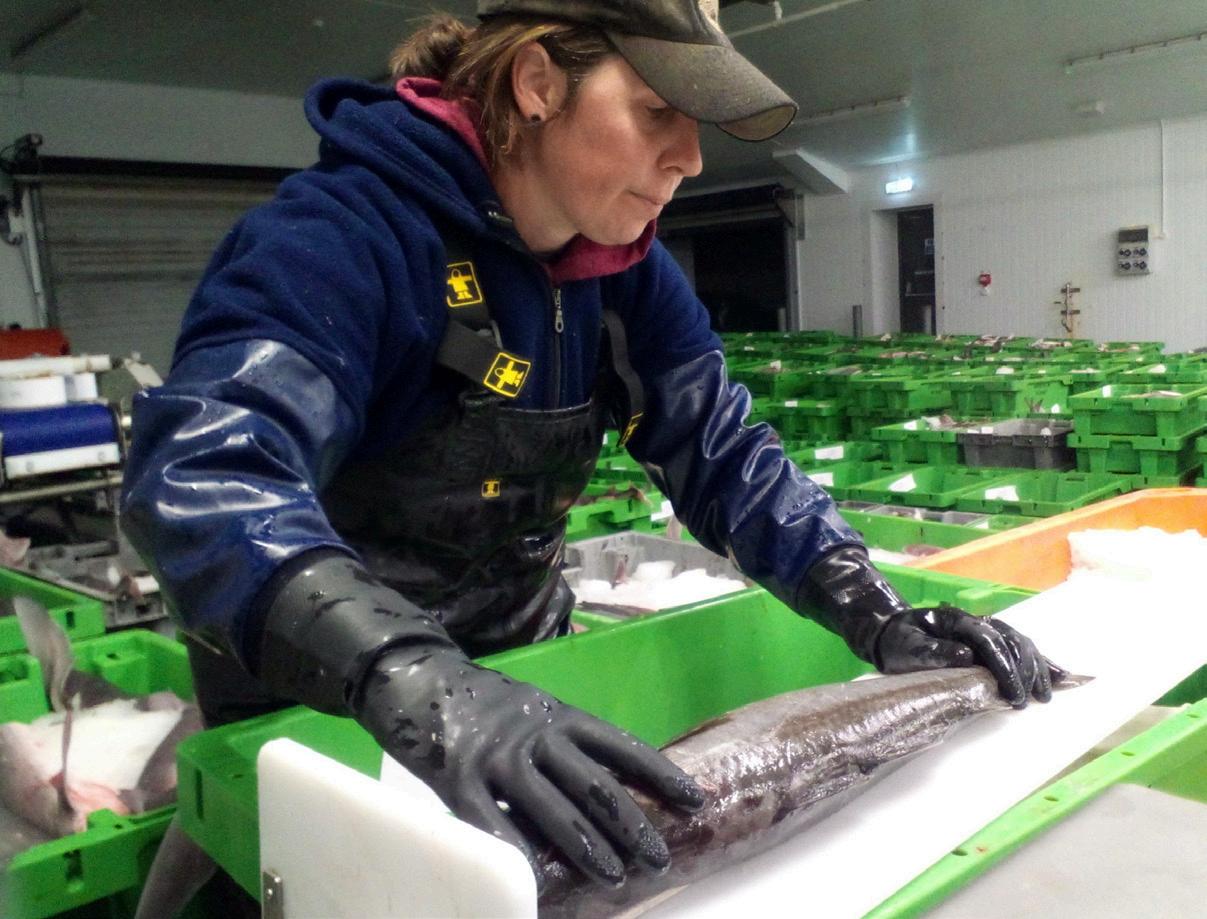SW pollack: fishing for data
A fisheries scientist working on a sixmonth industry-led project to improve understanding of pollack stocks takes a trip aboard a vessel participating in the groundbreaking trial
IHAVE BEEN KEEN TO organise a trip onboard Newlyn-based vessel Maverick R 486, a Cygnus Cyfish 33, since the end of 2024, but a combination of seasonal gales, tides and availability have seen a couple of trips postponed. After a brief spell of settled weather at the very beginning of March, backed by a favourable weather forecast, I was finally able to join skipper and vessel owner Dave Smith for a day trip out of Newlyn.
Maverick is one of a number of under-10m vessels in the South West targeting pollack, and has been severely impacted by the zero TAC introduced for area VII pollack from January 2024, with just a small 75kg a month allowance for accidental bycatch.
Dave grew up fishing onboard his dad’s boat off the coast of Plymouth, and began his commercial fishing career targeting conger eel. He explained to me how the fishing operations onboard Maverick today are very much a product of his 38-plus years working at sea, learning from a mixture of both successes and failures.
He has evolved and honed his fishing technique to catch highquality pollack, and sustainability runs through every aspect of his operation. Maverick’s fishing method is hook and line using programmable jigging machines, which Dave said ‘gives me the
By RACHEL BRITTAIN
ability to make changes to the programme as I fish’.
This method sees little to no bycatch of non-target species, and when he is fishing for wreck species such as saithe (coley) and ling, the jigging machines can also help to eliminate the capture of pollack, though he said this is still ‘an ongoing process’.
Maverick’s engine has also been upgraded to a 331kW six-cylinder Iveco Cursor 9 ‘for better emissions and fuel efficiency’, reducing both the vessel’s carbon footprint and fuel bills. The real kicker is that Dave bought the new engine in June 2023, just a few months before the government started talking of a pollack ban. By the time it was fitted at the end of the year, the ban had become a reality.
As we left Newlyn harbour, we were treated to a stunning sunrise over Mount’s Bay, with St Michael’s Mount silhouetted against the orangey-pink sky. It was busy on the VHF that morning – a beamer from Newlyn had lost engine power further west and required a tow back into port, but another vessel had already responded to the pan-pan call.
We steamed out for about an hour, and before I had the chance to don my foul weather gear, we
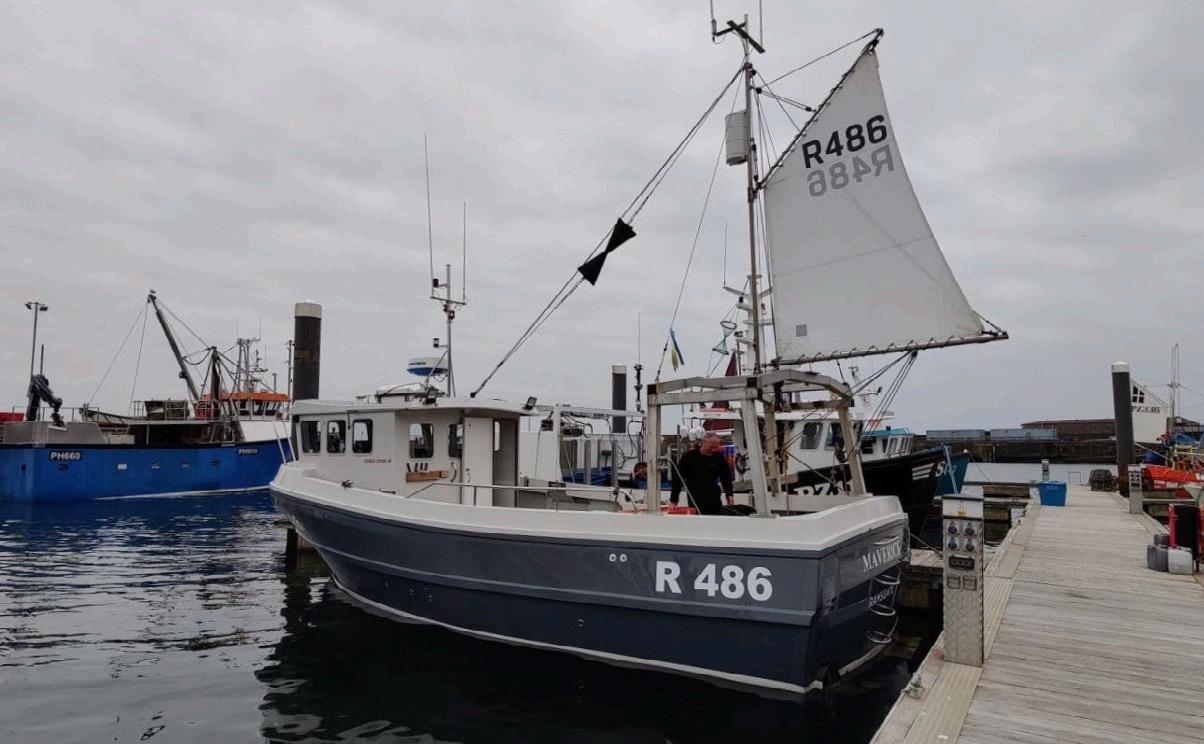
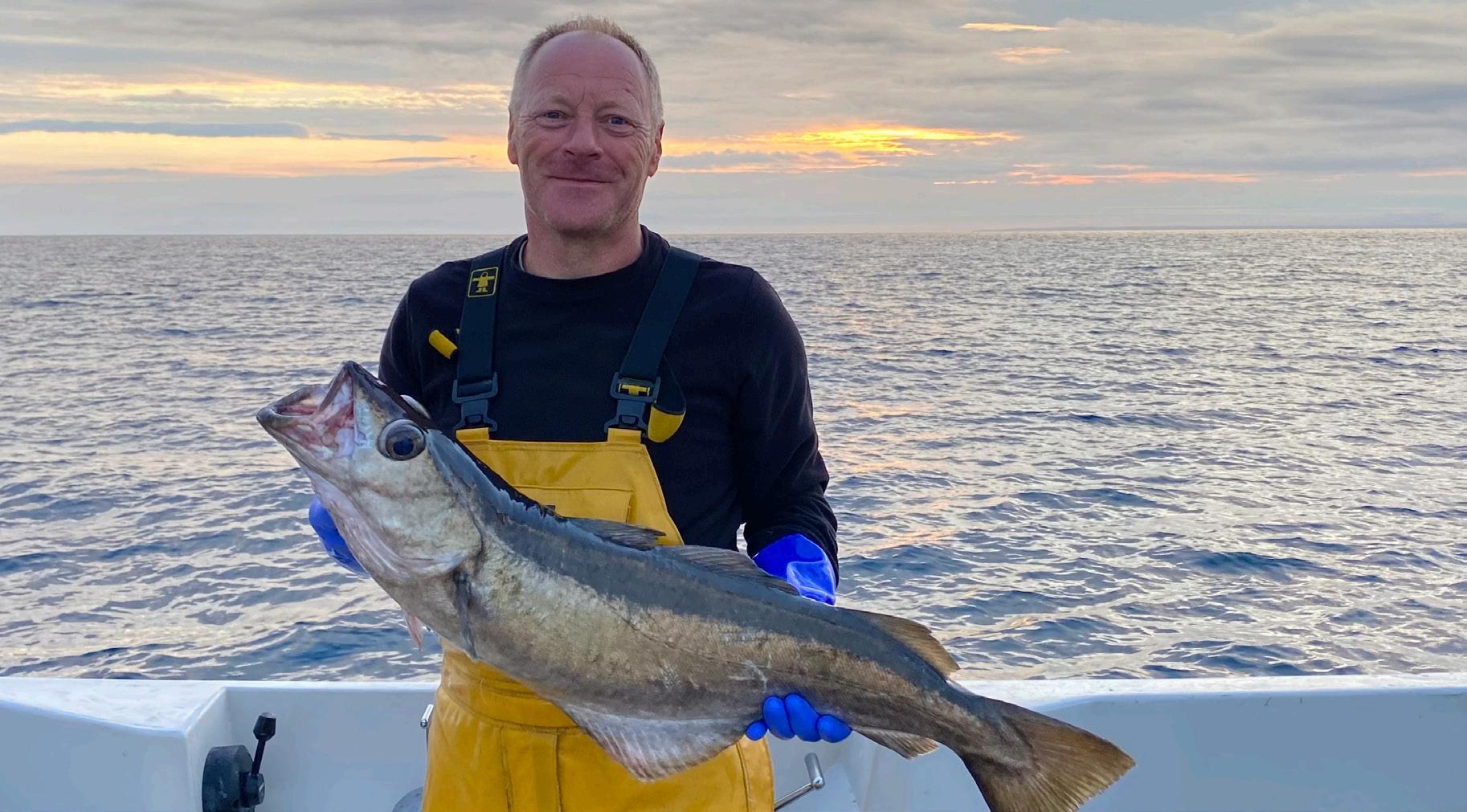
rapidly changed course to recover a large piece of floating debris. Dave hauled the large empty drum onboard and explained that as much as he doesn’t want a huge piece of debris sitting on deck all day, he sees it as his responsibility to remove any lost or discarded gear that he encounters and dispose of it back at port.
We got back on course and after the two-hour steam arrived at our first site of the day, a wreck sitting in 90m of water. Dave began the process of setting up his gear, but as he was programming the jigging machine, frustratingly one of them displayed an electrical fault, so we were down to just one machine.
Whilst drifting slowly away from the wreck, Dave sent the line down; it contains several hooks, but the fish weren’t biting yet. Experience dictates that if the first couple of deployments don’t yield any fish, it’s time to move sites. He told me he was trying his luck by fishing such a big tide today, but that it was worth a try as there are so many fish on the ground at the moment.
Whilst underway we were joined by a playful pod of common dolphins, with a couple of calves in tow who were delighting in the wake of the Maverick. They were a noisy bunch, and their clicks penetrated the hull of the boat through to the wheelhouse.
We tried another couple of wrecks, but we were still struggling with the speed of the tide. It was the tail end of a really big spring tide, so the window of opportunity was small and there was always the possibility that the fishing wouldn’t work out that day.
PRIOR TO THE POLLACK zero TAC, Maverick’s fishing season was April to October – timed intentionally to ‘leave the pollack alone’ during their
spawning season. This is the first year that the vessel has operated over the winter, in an attempt to make ends meet.
Maverick also operated with a skipper and crewman which enabled multi-day trips, maximising fishing opportunities and spreading fishing effort around the north and south coast of Cornwall to the Isles of Scilly and beyond, and even as far afield as the coast of Guernsey – which is pretty impressive for a vessel just shy of 10m in length.
However, with the zero TAC, the viability of fishing businesses like Maverick, solely dependent on pollack, were in uncharted territory, and has sadly resulted in Maverick’s crewman of six years leaving. This limits the vessel to day trips and when catches are poor, sometimes not even the fuel bill is covered.
Acknowledging the huge impact on small boats of the zero TAC, and the data deficiencies in the ICES stock assessment, the government offered some of the affected vessels the opportunity to supplement their income by taking part in a population study led by the Centre for Environment, Fisheries and Aquaculture Science (Cefas). This aims to help determine the stock structure of pollack through genetic analysis.
Over the years Dave has welcomed fisheries observers onboard his vessel. He is very switched on to the importance of facilitating data collection, and keen to play his part where he can. Anecdotally, it seems that the industry generally supports better data collection, but there is sometimes a lack of faith in the process and where it leads.
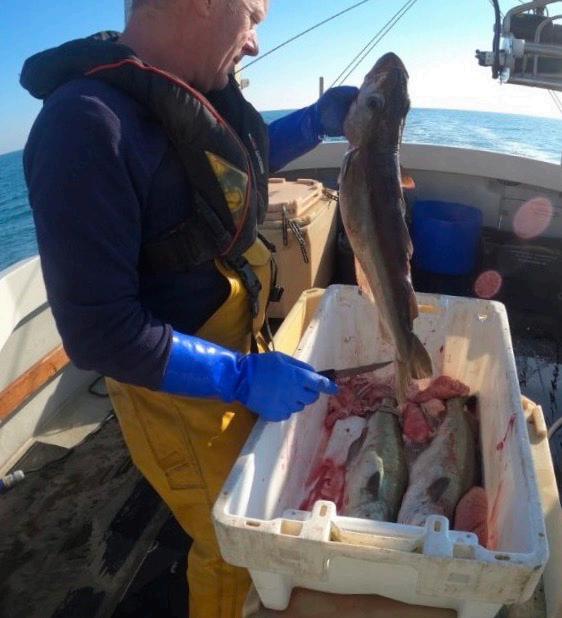
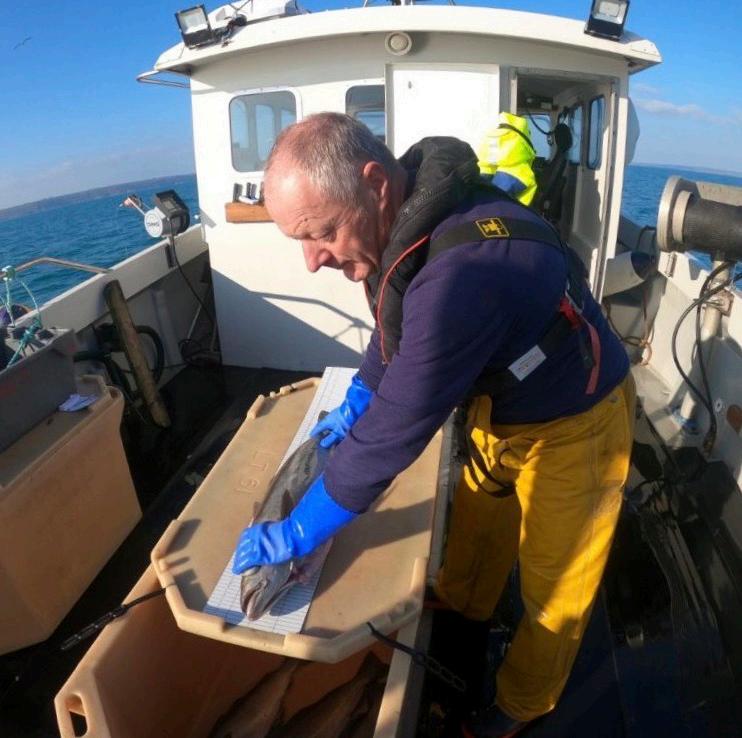
Maverick is also one of 13 vessels from Devon and Cornwall participating in a project on pollack funded by the Fisheries and Seafood Scheme (FaSS). The project is industry-led, organised by the Plymouth Fishing and Seafood Association and Cornish Fish Producers’ Organisation (CFPO). Simon Thomas of the University of York is the lead scientist – he also led earlier data collection on the pollack Fisheries Industry Science Partnership (FISP) project (FN, 13 December, 2023, ‘Taking stock of pollack’).
The current project is essentially a pilot. With funding secured initially for six months (September 2024 to March 2025), it aims to improve understanding of the state of the pollack population in ICES area VII by collecting length and catch per unit effort data of bycaught pollack across Devon and
Cornwall.
Vessels participating in the at-sea programme are recording length, sex, maturity and stomach contents of all bycaught pollack, as well as their fishing effort. It is hoped that this data can contribute to future stock assessments, as well as pave the way for a more collaborative approach to data collection within data-deficient fisheries such as pollack.
DAVE’S PERSEVERANCE
paid off and we caught our first fish of the day, a nice pollack of average size.
The 75kg monthly bycatch allowance equates to just 26 fish, given that Dave tends to take only larger pollack. He handled the fish carefully, and put it straight into slush ice.
As we headed further out, the wind started to switch from east to northeast, and conditions
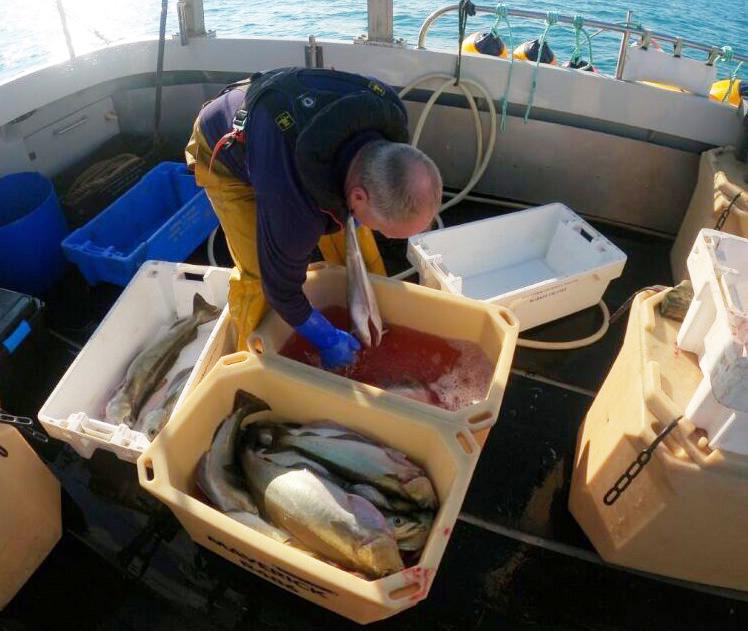
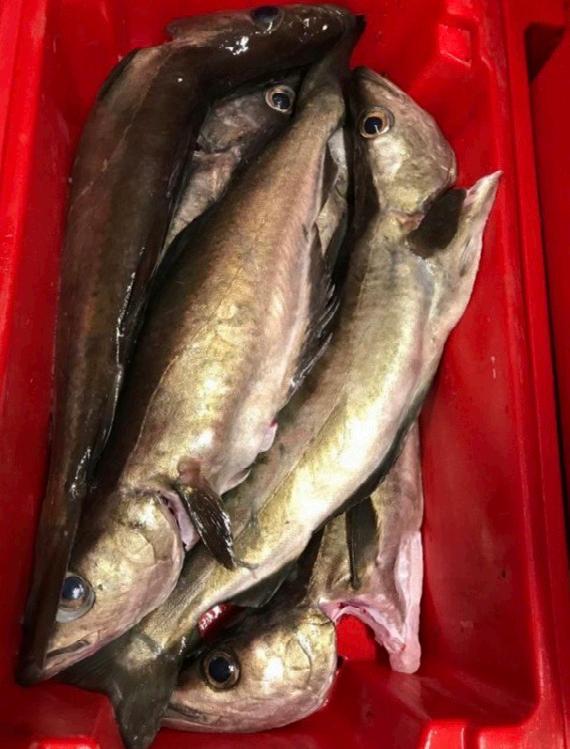
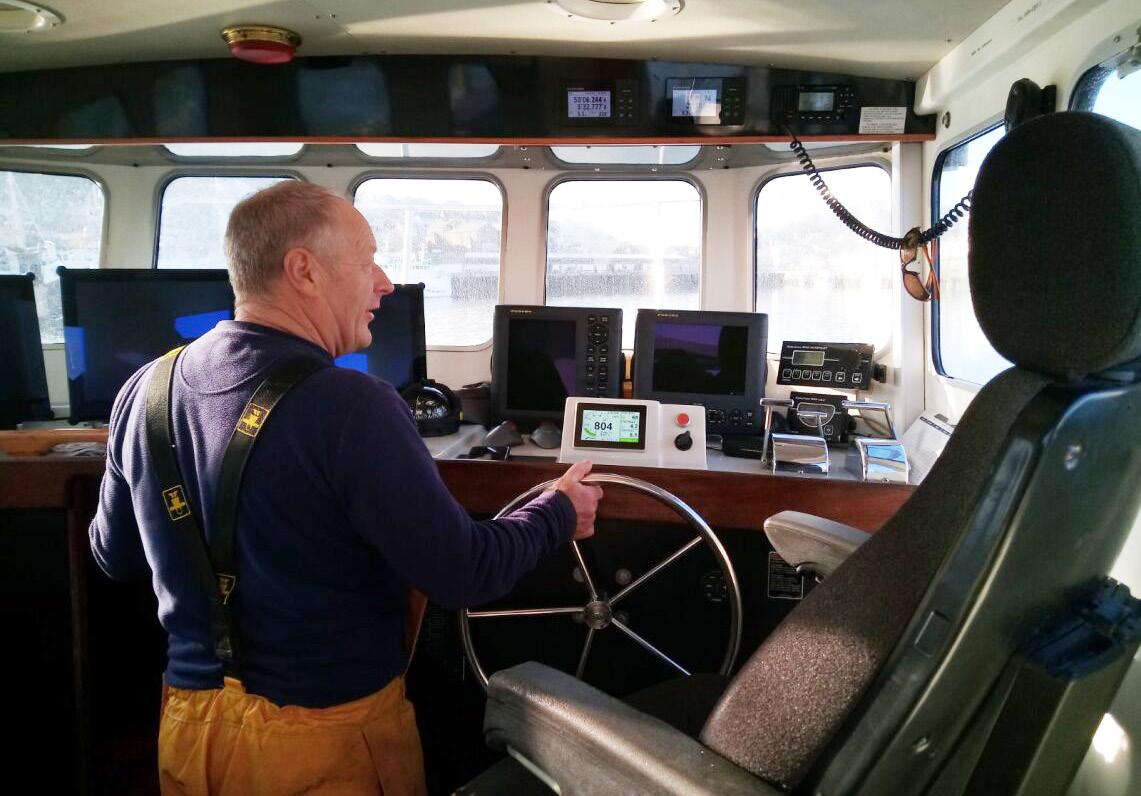
weren’t quite as settled as I’d have liked. But the tide was slacking off and a couple more fish started to come up on each haul of the line – unfortunately more pollack, and only one or two per site, so it was slow going and not the species Dave was hoping for. The fishing had been much better two days ago, with lots of fish on the grounds, but today’s conditions just weren’t quite right.
After a couple of hours the tide had turned and staying on top of the wrecks became challenging, so Dave settled for the 40kg of fish he had on ice and resigned himself to the humbling truth that ‘that’s fishing’. As Maverick got closer to home, around 10 miles from Newlyn, shoals of bait fish started appearing on the echosounder near a wreck, an opportunity too good to pass up, so the gear was deployed one last time.
Unfortunately, it just wasn’t Maverick’s lucky day. The hooks got snagged on some ghost gear, and the line snapped. The day’s fishing was over. Today’s catch might not cover the fuel, but Dave was still in relatively good spirits, and through our conversations throughout the course of the day it was apparent how content he is just being out at sea.
Before we headed into Newlyn Dave showed me his system for collecting pollack data onboard Maverick. He first guts the fish and separates them by sex, then carefully measures the length of each fish. It can be a laborious process recording for each fish, especially on days when there are multiple pollack. Dave works methodically, and is very conscientious about collecting accurate data for the programme.
It’s good for me to see first hand how data is collected onboard – it’s my job to check and enter this data ashore, once it’s been submitted to the CFPO. Seeing Dave collect the data gives me some insight into how we can improve the programme in the future if we are successful in obtaining further funding
We arrived back into Newlyn around 5pm and headed straight for the fish quay. Once fish is offloaded, it’s graded by weight, sorted into boxes, iced, and then moved to the fridges ready for the next day’s auction. The quality and vibrant colours of the catch were testament to Dave’s care and fishing methods.
Back at the berth, we continued to discuss the future of the pollack fishery and what happens next for vessels like Maverick. Dave is exploring possibilities for new fisheries, but after investing so much in developing his business around pollack, this is all completely uncharted territory. There is huge investment and risk attached to moving into a new type of fishing, not to mention the time associated with researching new gear and applying for licences.
Dave knows that we need more data on the pollack stock to fully understand the true state of play, and wants to work within a sustainably managed fishery, but is acutely aware of the painfully frustrating slow pace at which the science and data collected is considered by policy-makers before being translated into action. We agreed that there
needs to be a different way of doing things.
Over the years, I’ve worked on various fisheries data collection projects in the UK and abroad, and have tried to place myself in the shoes of the fishing industry. How would I feel if a total stranger approached me asking to board my boat and record catches? Would I trust that the information collected in that moment paints a true picture of the days, months and years of observations made whilst working at sea?
On the whole, I’ve been overwhelmed by how hospitable and generous so many of these individuals have been in sharing their knowledge and making me feel welcome onboard. Spending the day aboard Maverick was no exception, and it reaffirmed my commitment to ensuring that I collect high-quality data to the best of my ability.
I am hopeful that projects such as the pollack FaSS could be the start of industry-led data collection that can enhance the existing work carried out by Cefas and other government agencies, so we get a clearer picture of what is actually happening with the pollack stock in the here and now.
